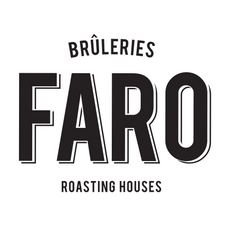Latin America: Costa Rica
Costa Rica: truly a classic! While the country accounts for just one percent of the world’s arabica production, its main varieties, Caturra and Catuai, have a forthright bouquet that commands admiration.
Overall taste profile
Many well-known coffee importers use the word “clean” to describe these coffees. They are renowned for being round and sweet, with distinct, unabashed accents of citrus and ripe grapes (at high altitudes) and burnt caramel (medium altitudes).
Growing regions
TARRAZU: Region where 35% of the country’s total production is grown. Agricultural lands are at medium altitudes of 1000 to 1800 m. Taste profiles are nuanced with full-bodied, well-balanced finishes (dark chocolate to black currant), placing the region at the top of the list for coffee lovers. Numerous micro-lots are available, for a range of flavours as lively and distinctive as they are varied. At Faro, we offer some of these micro-lots, and they are all well worth the trip – Costa Rica Geisha is just one example.
CENTRAL VALLEY: This region comprises San Jose, Heredia and Alajuela provinces. Clearly delineated wet and dry seasons are characteristic of growing conditions in the central valley, resulting in coffees prized for their pure aromas (honeyed and sweet with marked citrus fragrances). Located at a medium altitude of 1000 to 1400 m, the plantations in this region account for 15% of the country’s production.
BRUNCA: The Brunca region comprises two cantons, Coto Brus and Perez Zeledon. These lands include numerous biological reserves with irregular soils (singular typography resulting from a mountain-encircled valley), fostering extremely lush vegetation. The coffees grown here are equally luscious: climatic and geological conditions are perfect for coffee growers. Small cooperative farms abound, at altitudes from 900 to 1700 m. The Perez Zeledon valley enjoys an ideal micro-climate, yielding an ecosystem that is rich and diverse, like its coffees.
Processes
When it comes to drying processes, Costa Rica is a pioneer. The Honey Process is mouth-watering news for everyone who appreciates a good cup. The coffee cherries are dried naturally, preserving part of the pectin-bearing mucilage around the bean. This unique technique (natural semi-washed processing), widespread in the Tarrazu region, yields beans with a subtle balance between the acidity and body of the fruit.
Traditional natural washed processes are also used.
It is noteworthy that despite Costa Rica’s emerging technology, artisanal methods are still the custom.



